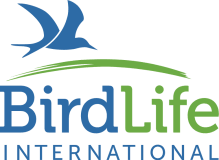The QuarryLab Project / Proyecto QuarryLab
The project is aimed at generating a manageable and sustainable framework of biodiversity which is consistent with the reality of ‘La Medina’ quarry. It will provide a wide range of measures of biodiversity management during and after exploitation of the resource. We intend to generate and disseminate useful knowledge on biodiversity management in similar quarries. Therefore, we will create the ‘QuarryLab’ that allows measuring the effectiveness of proceedings employed and facilitate a communication structure that enables the participation of stakeholders.
Hence, we propose:
- Increase and sustain local biodiversity emphasizing key species such as lagomorphs.
- Create a place of study and work to serve as a tool to verify the success of management actions employed.
- Eliminate and prevent the spread of invasive species.
- Encourage the establishment of native plant species by facilitating the presence of pollinators.
- Create habitats for the establishment of the amphibians and reptiles.
- Enable nesting areas for birds and bats.
- Promote recovery of ecosystem services.
- Disseminate the project development and involve local groups in it.
SPANISH VERSION
Resumen: El proyecto está enfocado a generar un entramado de biodiversidad gestionable y sostenible que sea coherente con la realidad de la cantera la Medina. Aportará numerosas medidas de gestión de la biodiversidad durante y después de la explotación del recurso. Pretendemos generar y difundir conocimiento útil sobre el manejo de la biodiversidad en canteras similares. Para ello crearemos el "QuarryLab"que permitirá la medición de la eficacia de las actuaciones empleadas y facilitaremos una estructura de comunicación que posibilite la participación de los stakeholders.
Por tanto, planteamos:
- Aumentar y mantener la biodiversidad local haciendo hincapié en especies clave como los lagomorfos.
- Crear un lugar de estudio y trabajo que sirva de herramienta para comprobar el éxito de las medidas de gestión empleadas.
- Eliminar y evitar la propagación de las especies invasoras.
- Favorecer el establecimiento de especies vegetales autóctonas facilitando la presencia de polinizadores.
- Crear hábitats para el establecimiento de la herpetofauna.
- Habilitar zonas para la anidación de aves y quirópteros.
- Favorecer la recuperación de los servicios ecosistémicos.
- Divulgar la evolución del proyecto y hacer partícipes a los grupos locales en el mismo.



